発表者紹介/Presenter
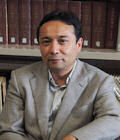
井手 誠之輔/Seinosuke Ide
九州大学/Kyushu University
教授/Professor/文学修士、九州大学(1981年)
研究者情報/Researcher Information
作品誌の観点から見た大徳寺五百羅漢図の諸相
大徳寺本は、13世紀には故郷を離れて鎌倉時代の日本に将来され、長らく異国の地における羅漢図制作の規範とされてきた。近代になるとアメリカの東海岸で展覧会(1894年)が開催され、その後の東海岸における分蔵を契機として、欧米では中国を代表する宗教画として認知され、さまざまな東西比較の議論を惹起してきた。
12世紀の故郷における誕生から今日に至るまで、さまざまな異なる時空のコンテクスト間を越境移動してきた大徳寺本は、その履歴を起点に展開してきた事象において、仏画制作と地域社会、外来美術の受容、美術の制度と古美術、東西美術の比較考察という今日的な美術史学の課題を網羅するだけでなく、仏教史や歴史学、宗教学、文化人類学などのさまざまな人文学の領域に対して、雄弁な視覚資料を提供している。
2009年夏、奈良国立博物館で開催された『聖地寧波展』ではじめて全容が公開されて以降、大徳寺本の研究は大きく進展し、南宋時代における浙江省寧波地方の地域社会や仏教信仰の実態に即して語りうる事例として、再び、注目を集めている。しかし、未だ不明なことも少なくなく、現在の課題を広く共有し、このシンポジウムの場で多角的に議論する意義はきわめて大きい。
本発表では、近年の研究成果を紹介するとともに、とくに作品誌の観点から大徳寺本や五百羅漢図の主題の朝鮮半島と日本への伝播とその受容に注目し、その検証から当初の南宋の時空へ遡及するかたちで、再び大徳寺本の制作背景を考えるために不可欠なアイテムを確認したい。
Various Aspects of the Daitokuji 500 Luohans from the Perspective of its Artistic Biography
During the thirteenth century the Daitokuji 500 Luohans left its original home and was brought to Kamakura-era Japan, where it served for centuries as a standard for the production of luohan paintings. In the modern era it was featured in an 1894 exhibition on the east coast of the United States, and afterwards entered the collections of several east coast museums. Subsequently it would be recognized as a masterpiece of Chinese religious art in the West, and play an important role in comparative east-west art historical discourse.
Thus from its creation up until the present the Daitokuji 500 Luohans has circulated between and transcended a number of disparate contexts across time and space. Because of its unique biography, the 500 Luohans naturally gives rise to numerous art historical themes, including the relationship of Buddhist painting production to local society, the reception of foreign artistic influence, artistic production in relation to antiquities, and comparative art history. Furthermore, it offers eloquent visual testimony to issues of concern to the other humanities fields, including Buddhology, history, religious studies, and cultural anthropology.
Since the epochal Nara National Museum exhibition Sacred Ningbo in the summer of 2009, when the entirety of the set preserved in Japan was put on display for the first time, research on the 500 Luohans has advanced at a rapid pace. It has once again become the focus of attention as a work with which the circumstances of local society and Buddhist worship in the Ningbo region in Southern Song Jiangnan can be understood. Unresolved issues still remain, however, and therefore it is meaningful to share and discuss them among scholars from multiple perspectives in this symposium.
Introducing the latest research carried out over the past ten years since the Sacred Ningbo exhibition, this paper explores in particular the circulation and reception of the “500 Luohans” subject in Korean and Japan. It then reflects back from its transregional circulation to its initial phase of production in Southern Song China, and articulates those factors that were indispensable to the production context of the Daitokuji 500 Luohans.
Translated by Yukio Lippit
自作品誌的觀點所見大德寺五百羅漢圖的諸相
大德寺本在13世紀時離開故鄉,被攜至鎌倉時代的日本,長久以來在異國之地被當作羅
漢圖製作的規範。到了近代,以在美國東岸所舉辦的展覽(1894)中被陳列,及其後分藏於
美東為契機,在歐美作為代表中國的宗教畫被認知,並引起了種種東西比較的議論。
大德寺本,自其誕生於12世紀的故鄉以至今日,在各式各樣相異的時空脈絡間進行跨
境移動。以其履歷為起點而展開的現象,不只網羅了佛畫製作和地域社會、外來美術的受容
、美術制度和古美術、東西美術的比較考察等所謂今日的美術史學的課題,也對佛教史或歷
史學,乃至宗教學、文化人類學等各式各樣的人文學領域,提供了極具說服力的視覺資料。
2009年夏季在奈良國立博物館所舉辦的「聖地寧波展」首次公開全貌以來,大德寺本的研
究有很大的進展,作為切合南宋時代浙江省寧波地方的地域社會和佛教信仰實態而陳述的事
例,再次受到矚目。但是,尚未明朗之處仍不少,在現在的課題廣泛地共有之下,於此次研
討會這樣的場合中所進行的多元討論,其意義深遠。
就本發表而言,在介紹近年的研究成果之際,特別從作品誌的觀點關注於大德寺本和五百
羅漢圖的主題在朝鮮半島和日本的傳播,以及其受容的情況,並透過如此檢證而溯及大德寺
本在南宋的原有脈絡,再度確認為了瞭解大德寺本製作背景不可或缺的項目。
中文翻譯 李宜蓁
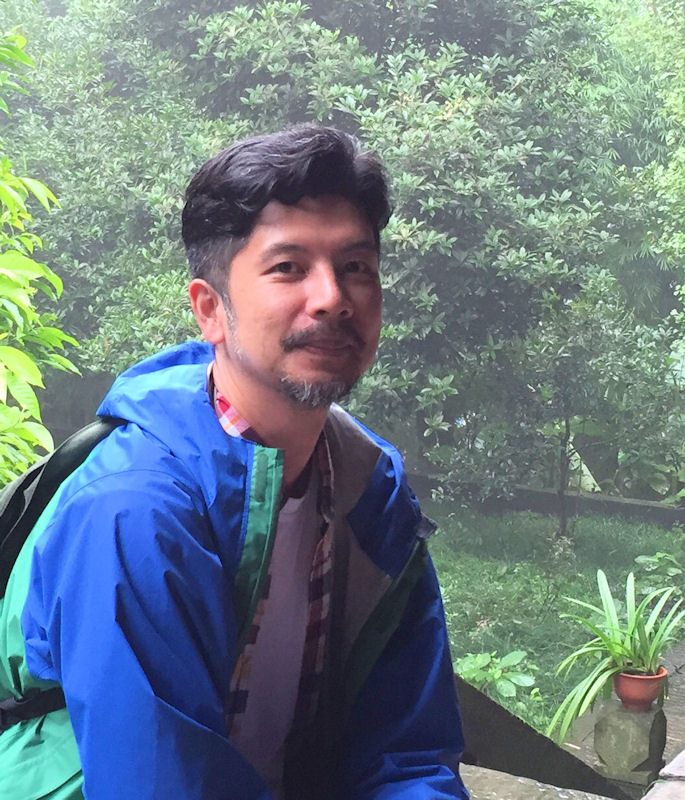
増記 隆介/Ryusuke Masuki
神戸大学/Kobe University
准教授/Associate Professor/文学博士、東京大学(2016)
研究者情報/Researcher Information「五百羅漢図」の母胎としての呉越絵画―日本伝来の白描図像を中心に―
大徳寺「五百羅漢図」が描かれた南宋時代、皇帝はその行在として杭州に駐畢した。そして、杭州西湖の湖畔に展開する仏刹は、南宋に先立ちこの地を都とした10世紀半ばの呉越国時代を通じて創建された。『仏祖統紀』には「西湖南北諸刹相望む、皆、忠懿の創立なり」と記され、その多くは呉越国最後の国王・銭弘俶によるものとされる。南宋時代における仏教絵画様式の成立を考えるとき、その母胎の一つが、北宋時代を通じて収集され、徽宗の時代に集大成された北宋宗室コレクションや開封の大相国寺や宮中に描かれた様々な仏教壁画であったことは容易に推察できる。ただし、それらについては北宋の滅亡時にどのような去就をたどったのかを考えた時にそれらのみを母胎とみなすことが躊躇される。そこで想起すべきは、杭州という場に伝存した呉越国時代の仏教美術が南宋仏画の成立にどのような役割を果たしたかということではないだろうか。例えば、現存する数少ない呉越絵画であり、銭弘俶によって開板された版画に基づく「応現観音図」(大東急記念文庫)の図像は、宝誌を象徴する十二面観音であり、その説話は「五百羅漢図」においても絵画化されている。また、「五百羅漢図」には、銭弘俶塔に代表される五代から北宋にかけての江南の仏教文物が描かれていることも周知のとおりである。ただし、これまでは呉越絵画の様式が明らかではなかったこともあり、その検討は主題や図像の範囲に限られてきた。一方で平安仏画史を研究する立場からは、平安時代後期の『別尊雑記』(仁和寺)などの白描図像を通覧することで「応現観音」に様式的に近似する作例を見いだすことができる。よって本発表では、「五百羅漢図」の様式的な母胎としての呉越絵画の具体的なありようについて、日本に伝来する白描図像や版画を用いて再構築することを試みたい。
Painting of the Wuyue Kingdom as the Roots of the 500 Luohans:
An Analysis Based Upon Iconographic Drawings of Japanese Provenance
During the Southern Song period, the era when the Daitokuji 500 Luohans was created, the Chinese emperor was based in Hangzhou. The Buddhist monasteries that spread out along Hangzhou’s West Lake, however, predate the Southern Song and were founded in the tenth century Wuyue Kingdom (907-978), whose capital was also Hangzhou. According to the Fozu tongji (Record of the Lineage of the Buddha and Patriarchs, J. Busso tōki), “The Buddhist temples that border West Lake to the north and south, all of them were founded by [Prince] Zhongyi,” that is to say, many of these temples were founded by Qian Chu, the last Wuyue king. When one considers the stylistic development of Southern Song Buddhist painting, it is natural to speculate that its origins are rooted in the Song imperial collection—which was amassed throughout the Northern Song period and culminated in the era of Emperor Huizong—or the various Buddhist wall paintings that were created at the Imperial Palace or the Great Xiangguosi monastery in Kaifeng. And yet when one considers their fate with the fall of the Northern Song, it is difficult to posit these sources alone as the foundation of later painting. In this regard, it is important to examine the relationship between the Buddhist art of the Wuyue Kingdom that was transmitted in the Hangzhou area and the development of Southern Song Buddhist painting. For example, the iconography of the Yingxian Guanyin tu (J. Ogen Kannon zu; Daitōkyū Memorial Library), which was based on a woodblock initiated by Qian Chu, depicts Guanyin with twelve heads, thus symbolizing Baozhi; this anecdote is pictorialized in the 500 Luohans. It has also been observed that the 500 Luohans depicts Buddhist artifacts of the Jiangnan region dating from the Five Dynasties to Northern Song periods, perhaps best reflected in the Qian Chu-sponsored pagodas. Because the nature of Wuyue painting has not been clear until now, however, the examination of this relationship has been limited to subject matter and iconography. On the other hand, from the perspective of Heian Buddhist painting research, when one surveys the iconographic drawings (hakubyō zuzō) in Besson zakki (Ninnaji) and other compilations, one notices many works that are stylistically similar to Yingxian Guanyin. Accordingly, this presentation attempts to explore with greater precision the roots of the 500 Luohans in Wuyue painting by examining iconographic drawings and prints of Japanese provenance.
Translated by Yukio Lippit
作為《五百羅漢圖》的母胎的吳越繪畫─以日本傳來的白描圖像為中心
在大德寺《五百羅漢圖》被描繪的南宋時代,皇帝駐蹕於作為行在的杭州。而分佈於杭州西湖湖畔的佛剎,創建於十世紀中的吳越國時代,吳越國是先南宋而建都於此。在《佛祖統紀》中記載著「西湖南北山,諸剎相望,皆忠懿之創立也」,可見西湖周邊多數的佛剎被當作吳越國最後的國王錢弘俶所創。在考慮南宋時代佛教繪畫樣式的成立的時候,很容易就可以推察出,經由收集於北宋時代,集大成於徽宗時代的北宋宗室藏品,以及描繪於開封的大相國寺和宮中的各式各樣佛教壁畫是其母胎之一。只是,關於這些作品,在考慮到北宋滅亡之際歷經了何種留捨過程時,對於只將這些作品視為母胎一事,不免感到躊躇。此處應聯想到的,不正是傳存於杭州此一場域的吳越國時代的佛教美術,對南宋佛畫的成立起了何種作用這樣的問題嗎?例如,作為現存少數吳越繪畫,根據由錢弘俶開版的版畫而繪成的《應現觀音圖》(大東急紀念文庫)的圖像,是象徵寶誌的十二面觀音,而這樣的故事也在《五百羅漢圖》中被圖像化了。再者,眾所周知,在《五百羅漢圖》中描繪著以錢弘俶塔為代表的從五代至北宋的江南佛教文物。只是,因為至今為止的吳越繪畫樣式尚未明朗,對吳越繪畫的檢討只限於主題和圖像的範疇內。另一方面,從研究平安佛畫史的立場來看,藉由通覽平安時期後期的《別尊雜記》(仁和寺)等白描圖像,可以發現與《應現觀音》樣式近似的例子。因此,在本發表中,關於作為《五百羅漢圖》的樣式母胎的吳越繪畫的具體樣貌,發表者想試著運用白描圖像和版畫對此進行再構築。
中文翻譯 李宜蓁
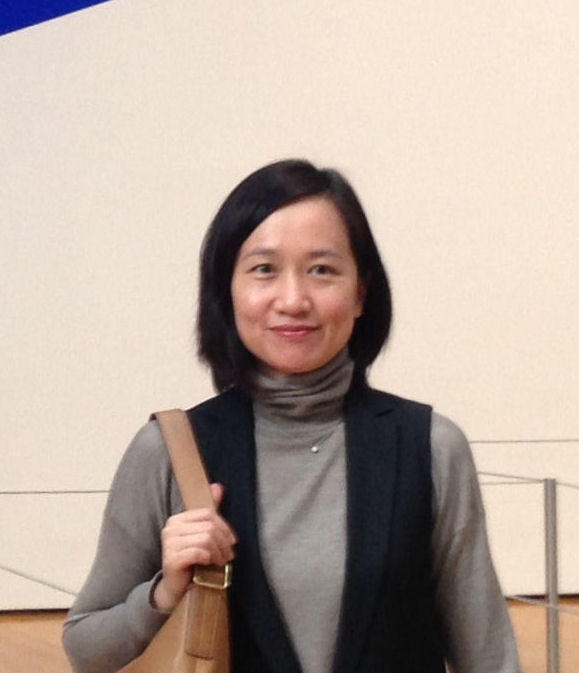
陳 韻如/Yunru Chen
国立故宮博物院/National Palace Museum
書畫處研究員/Researcher/Ph.D., National Taiwan University(2009)
研究者情報/Researcher Information「大理国梵像巻」の山水表現と画風の起源に関する問題
清の宮廷旧蔵の「大理国梵像巻」(現在、台北国立故宮博物院所蔵)は、長さ約16メートルに及び、画巻の図像内容が豊富であり、20世紀初めより仏教絵画研究における重要な精品とみなされてきた。大理国(937-1254)の現存唯一の画巻と称される。本巻の研究成果は多くの累積があり、とりわけ図像の錯簡と識別について考察されてきた。それに基づき多くの研究者は、「大理国梵像巻」が大理の地域で制作され、宋朝との交流に乏しく、本巻における漢地の伝統が唐に近いと指摘してきた。これに対し発表者は、本巻中に山水表現が多くあり、汀渚水鳥、奇石墨竹、折枝花鳥、山水屏風など、宋朝に流行した絵画モチーフが見られることに着目する。画中の山水は墨染が多用されるが、短筆の線条で山顚の樹叢を描く方法も見られる。このほか一部の略画的に描かれた、平遠的な水の広がりをもつ山水景観は、北宋晩期に隆盛した瀟湘山水と呼応するようである。このような「大理国梵像巻」の山水表現の画風に関する問題は、考察の対象として分析を進める価値がある。本発表は、まさにこの問題を議論し、並びにこれを根拠として画風の起源を再び検証し、中世の東アジアにおける地方様式の相互交流と相補的な関係性を評価するための研究の基礎としたい。
日本語訳 前田佳那
Landscape in the Dali Scroll of Buddhist Images: Forms of Expression and Issues of Stylistic Origin
Approximately 16 meters in length and filled with rich imagery, the Dali Scroll of Buddhist Images (National Palace Museum, Taipei; formerly in the Qing imperial collection) has been seen as an important work for the study of Buddhist painting since the beginning of the 20th century. It is said to be the only surviving handscroll of the Dali kingdom (937–1254). The scroll has been the object of extensive research, particularly concerning the ordering and identity of its images. Given that the Scroll was created in the territory of the Dali Kingdom, which lacked direct exchange with the Song dynasty, studies have often claimed that many of the scroll’s Han Chinese elements are close to works of the Tang dynasty in style. However, the author has noted that throughout the Scroll, there are many instances of landscape imagery, including shoals with waterfowl, strange rocks and ink bamboo, birds and flowers on cropped branches, landscape screens, and other themes that were popular in Song painting. Although the landscape scenes in the painting are largely rendered in ink wash, one also sees the use of short brushstrokes to depict mountain peaks and myriad trees; further, some of the sketchy depictions of level views across watery expanses seem to echo imagery of the Xiao and Xiang Rivers, which rose to popularity in the late Northern Song. Such questions about the style of the landscape imagery in the Scroll are deserving of careful study. This paper will discuss such issues and will, in turn, reconsider the question of the stylistic origins of the scroll. This will serve as a foundation for assessing the exchange of and interactions among regional styles in medieval East Asia.
Translated by Phillip E. Bloom
《大理國梵像卷》之山水表現與其畫風來源問題
清宮舊藏的《大理國梵像卷》(現藏台北故宮)長約十六公尺,畫卷圖像内容豐富,自二十世紀初期即被視為佛教圖繪研究之重要精品,稱是大理國(937-1254)存世唯一畫卷。此一畫卷的研究成果累積甚多,其中又以圖像錯簡與識別之考察為最。論者多據以指陳《大理國梵像卷》屬大理之地區製成,乏與宋朝之交流,而其中之漢地傳統亦多近於唐風。對此,筆者留意《大理國梵像卷《卷中有多處山水表現,見有汀渚水鳥、奇石墨竹、折枝花鳥、山水屏風等流行於宋朝繪畫之母題。畫中山水雖墨染為多,但也可見短筆線條描繪山巓叢樹之法;此外,部分勾畫平遠水域的山水景觀似與北宋晩期盛行之瀟湘山水呼應。此類《大理國梵像卷》山水表現之畫風問題値得深入考察分析,本文將以此為論,並據以重新檢視此卷之畫風來源問題,作為評估東亞中世的地域畫風交流與互動情況之研究基礎。
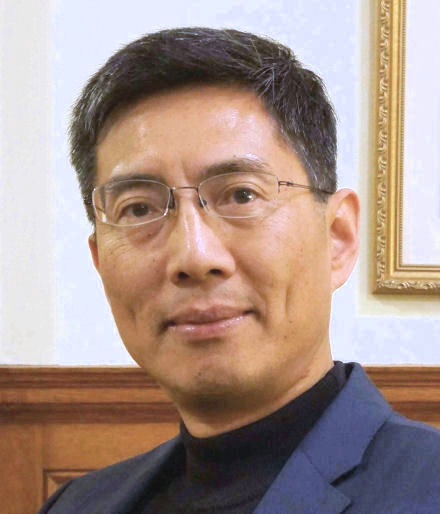
Eugene Wang
Harvard University
Professor/Ph.D., Art History, Harvard University(1997)
研究者情報/Researcher Information「火熨斗」では何故、鬼たちが仕女に代わっているのか
周季常筆「火熨斗」(大徳寺本46)(1185年)は、大徳寺所蔵の羅漢図連幅のうち、その構想が最も興味深い作例に数えられる。四人の男性形のうち二人は筋骨隆々とした鬼で、ともに絹に火熨斗をあてている。「火熨斗」は、詩文や図像上でよく知られた、仕女が絹を仕立てるというコンベンションの明白な定型である。問題は、何故なのかにある。この種の絵画的なパロディーが伝達しようとしていることは何か。羅漢を主題とする絵画の一般的な機能を考慮するとき、このパロディーはいかなる目的に敵うのか。単に即興でつくられた画家の思いつきなのか。あるいは、より大きな視覚的衝動、さもなくば社会心理的な趨勢を発信しているのか。これらの疑問に答えるには、おそらく9世紀に始まった数多くの火熨斗の作例から派生したバリエーションの一つとして、本図を扱う必要がある。注目されることは、搗練から熨す作業への歴史的な変遷、すなわち搗練する仕女たちから熨しをあてる仕女たちへの変遷であり、さらに、絹を搗練し熨す場面の両方を包括する連続した工程の成立である。現存する文学及び絵画における証左から、この種の豊富な作品群が9世紀から発展してきたことが分かる。詩と絵画の双方における明確なある類型のコンベンションが、膨大な総体をともなって出現し、一連の修辞的が発生する。まさにこの類型を背景に、大徳寺五百羅漢図は位置付けられ評価され得るであろう。
日本語訳 前田佳那
Why Do Demons Repalce Noble Ladies in Ironing Silk?
Zhou Jichang’s Ironing Silk(Daitokuji 46) (1185) is one of the most intriguing compositions in the set of luohan paintings in the Daitokuji collection. It depicts four male figures—among them two muscular demons—engaged in ironing silk. It is an obvious riff on the well-known poetic and iconographic convention of aristocratic ladies preparing silk. The question is why? What is it that the pictorial parody of this kind tries to communicate? What purpose does it serve in view of the general function of the Luohan-themed paintings? Is it just an improvised painterly whim? Or does it signal a larger visual impulse and psycho-social trend? To answer these questions, we need to treat this painting as a variation within the large bodies of Ironing Silk paintings that began probably in the 9th century. What is be noted is the historical shift from pounding to ironing, i.e., the Ladies Pounding Silk to the Ladies Ironing Silk, and the formation of a sequential scenario that encompasses both the silk-pounding and silk-ironing scenes. Existing literary and pictorial evidence point to a rich body of works of this kind that evolved from the 9th century on. With the sizable corpus emerged a distinct generic convention—both in poetry and painting—that carries with it a set of rhetorical patterns. It is against this generic backdrop that the Daitokuji painting can be measured and assessed.
在《火熨斗》中為何鬼取代了仕女?
由周季常所畫的《火熨斗》(1185,大德寺本46)是大德寺收藏的這套五百羅漢圖中,構想最為有趣的作品之一。它描繪著四名男性人物(在他們之中有兩名是有著肌肉的鬼)從事著熨練的工作。在仕女備練(preparing silk)這樣廣為人知的詩和圖像慣例中,這是一個非常明顯的格套。問題是為什麼?這種圖像上的戲仿試圖傳達什麼?在慮及以羅漢為主題的繪畫的一般功能時,它發揮了什麼目的?它只是一個即興創作的畫家奇想嗎?抑或它標誌著一個更大的視覺推力和心理社會趨向?為了回答這些問題,我們需要將這件畫作視為在以熨練為題材的龐大繪畫群體(此一群體或許始於9世紀)中衍生而出的變形。值得注意的是,從「搗」到「熨」的歷史轉移,亦即從仕女搗練到仕女熨練的變化,以及包含著搗練和熨練場景在內的一連串情節的形成。現存的文學和圖繪上的證據指出,以此為題材的一群為數甚夥的作品是自9世紀發展出來的。在文學和繪畫兩方面上,一個明確的類型傳統伴隨著如此大量的作品群產生,而此一類型慣例承載著一套修辭學模式。正以此一類型慣例為背景,這幅大德寺繪畫可以被酌量和評價。
中文翻譯 李宜蓁
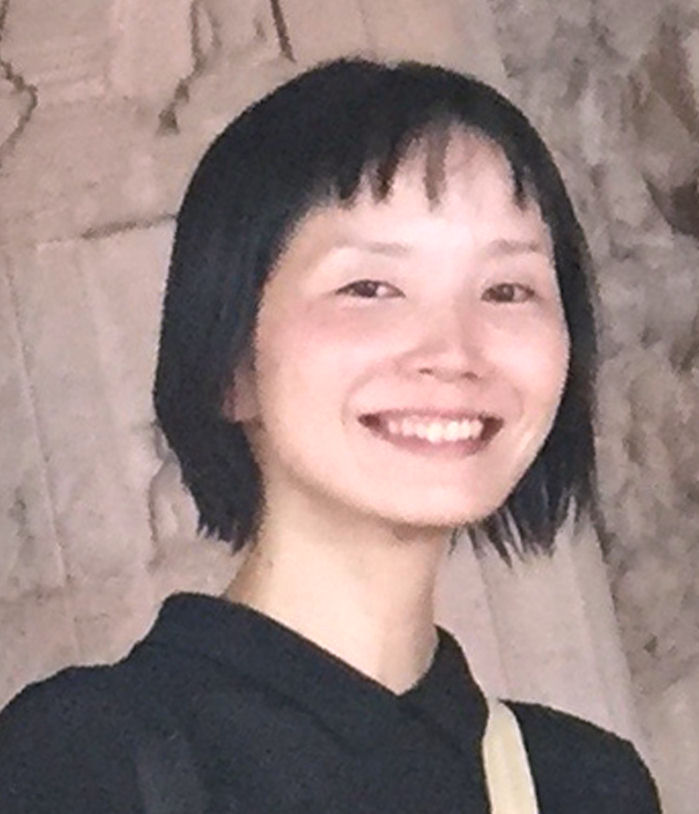
梅沢 恵/Megumi Umezawa
神奈川県立金沢文庫/Kanagawa prefectural Kanazawa bunko museum
主任学芸員/Chief Curator/文学修士、 早稲田大学(2000)
研究者情報/Researcher Information五百羅漢図に描かれる仏伝を暗示する図像─仏涅槃・龍女成仏を中心に─ ─
大徳寺に伝来する五百羅漢図は、天台山の石橋、方広寺周辺に示現する生身の羅漢を主題とする説話画的な要素が強い作例である。主な主題には次のようなものがある。①梵語arhatの意訳「応供」に示されるように、人天や動物等から供養を受ける図、②法会や喫茶、入浴など規律が守られた僧院での集団生活を描く図、③空中に浮遊し、雨を降らせ、獰猛な竜虎を手懐けるなどの神通力を描く図などである。
いくつかの画幅には、仏伝や経典に依拠するもう一つの主題が隠されている。例えば、①の「貴女の礼拝」(大徳寺本9)には、高貴な女性が羅漢を礼拝、供養する図が描かれている。しかし、衝立を背にして如意を持ち、脇息を体の前に置く羅漢は文殊菩薩を暗示している。つまり、この女性は「龍宮への飛来」(大徳寺本6)に描かれる龍王の娘である龍女であり、『法華経』提婆達多品に説かれる「龍女成仏」が本幅の隠されたもう一つの主題であることがわかる。また同様に、③の羅漢の神通力を描く画幅のうち、「月からの飛来」(大徳寺本23)にみられる空中に浮遊する羅漢は、釈迦の涅槃に際し、忉利天から降下する摩耶夫人の一行を先導する阿那律として描かれている、つまり、ここでは仏涅槃が隠された主題となっているのである。このような図像を踏まえて考えると、羅漢の神通力として解釈されてきた「身上出水」(大徳寺本68)にみられる頭頂から水を出す羅漢や「仏盤の奇瑞」(大徳寺本71)で身から放光し、浮遊する羅漢の神通力もまた、「双神変」(「舎衛城の奇跡」)や『瑜伽師地論』に説かれる「十八神変」などの釈迦の奇跡を暗示する図像であるとみられる。
本報告では、仏伝や釈迦の神変を暗示する図像に隠されたもう一つの主題を読み解くとともに、五百羅漢図の画中に肖像画的な人物像が描かれる理由について考えてみたい。とくに僧侶像は、羅漢に扮して描かれていることが注目される。つまり、画中に自らの肖像を描き込むことは、生身の羅漢に仮託して、釈迦の奇跡に立ち会うことを期待する行為と見なすことができるのではないだろうか。
Iconography that Suggests the Life of the Buddha in the 500 Luohans: With a Focus on the Parinirvana and Buddhahood of the Dragon Princess
The Daitokuji 500 Luohans is characterized by a strong emphasis on narrative subject matter such as the Stone Bridge of Mount Tiantai or the real bodies of luohans that manifest themselves in the vicinity of Fangguangsi. The main themes in its scrolls are as follows: 1) pictures in which luohans receive offerings from people, animals, and divine beings, as indicated by the alternative name by which the term “arhat” is translated into Chinese, yinggong; 2) pictures that depict communal life within a monastery following the vinaya precepts, such as ritual, tea drinking, and bathing; and 3) pictures that depict the supernatural powers of luohans such as flying in the air, summoning rain, and subjugating ferocious dragons and tigers.
A number of scrolls also embed within them hidden subjects that are based upon the life of the Buddha or sutra texts. For example, Luohan Receiving Homage from an Aristocratic Woman (Daitokuji 9) depicts a courtly woman worshipping and making offerings to luohans. In this painting, however, the luohan with a standing screen behind him, holding a ruyi scepter, and leaning on an armrest suggests the figure of the Bodhisattva Manjusri. This in turn suggests that the woman depicted here is none other than the daughter of the Dragon King who is shown elsewhere in Luohans Flying to the Dragon Palace (Daitokuji 6), and it becomes clear that one of the hidden subjects of this scroll is the “Enlightenment of the Dragon Princess” from the Devadatta Chapter of the Lotus Sutra. In the same manner, among those scrolls that depict the supernatural powers of luohans, Descent from the Moon (Daitokuji 23) shows a luohan flying through the air; he is rendered, however, in the manner of Anuruddha, who led Maya, the mother of the Buddha, down from the Trayastrimsa Heaven upon the Buddha’s passing. In other words, the subject that is couched in this work is the Parinirvana of the Buddha. When one considers such hidden subject matter, Water Emanating from a Luohan’s Head (Daitokuji 68), which until now has been seen as showcasing the supernatural powers of a luohan, or Miracle of the Buddhist Tray (Daitokuji 71), which showcases a luohan emanating light and floating in the air, can be understood as suggesting miracles performed by Sakyamuni as related in “The Twin Miracle” (“The Miracle at Sravasti”) or the “Eighteen Miracles of Sakyamuni” in Discourse on the Stages of Yogic Practice (S. Yogacarabumi sastra, C. Yujiashidilun).
This presentation thus attempts to uncover the hidden subject matter in the scrolls of the 500 Luohans that relate to the life of the Buddha or Sakyamuni’s miracles. It also considers why portraiture-like depictions are also found throughout its scrolls. In particular, Buddhist priests are rendered as luohans. This practice of embedding one’s own portrait in the scrolls may relate to the desire to place oneself in the body of a luohan in order to be able to witness an actual miracle of the Buddha.
Translated by Yukio Lippit
五百羅漢圖所描繪的暗示佛傳的圖像―以佛涅槃和龍女成佛為中心
大德寺五百羅漢圖是以在天台山的石橋、方廣寺周邊示現生身的羅漢為主題,具有濃厚故事畫要素的作品。主要的主題如下:①如同梵語arhat的意譯詞「應供」所表示的一般,接受來自人天和動物等的供養的圖,②描繪法會和喝茶、入浴等在恪守戒規的僧院之中的集體生活的圖③描繪飄浮在空中、致雨、馴服猙獰凶猛的龍虎等神通力的圖等。
在若干畫幅中,隱含著依據佛傳或經典的另一個主題。例如,在屬於①類主題的「女人的來訪」(大德寺本9)中,描繪了高貴的女性禮拜及供養羅漢的圖。但坐于插屏前、手持如意、将凭几置於身前的羅漢暗示着文殊菩薩。也就是說,這位女性是在「飛至龍宮」(大德寺本6)中有所描繪的龍王之女,亦即龍女,由此可知《法華經》提婆達多品中所述的「龍女成佛」是此幅中被隱含了的另一主題。再者,同樣地,在屬於③類主題的描繪羅漢神通力的畫幅中,「從月飛來」(大德寺本23)中可見的飄浮於空中的羅漢被描繪成,在釋迦涅槃之時,為從忉利天下凡的摩耶夫人一行引路的阿那律。也就是說,此處中佛祖涅槃為被隱含了的主題。立足於此般圖像而加以斟酌的話,過往被詮釋為羅漢神通力的「身上出水」(大德寺本68)中可見的水從頭頂湧出的羅漢和「佛盤的奇瑞」(大德寺本71)中從身體放光、飄浮於空中的羅漢,這些羅漢的神通力又可被視作暗示「雙神變」(「舍衛城的奇蹟」)和《瑜珈師地喻》中所述的「十八神變」等釋迦的奇跡的圖像。
在本報告中,在解讀暗示佛傳和釋迦之神變的圖像所隱含的另一主題的同時,對關於在五百羅漢圖的畫面中肖像畫般的人物像所描繪的理由進行思考。尤其關注於僧侶像被裝扮成羅漢加以描繪一事。也就是說,在畫面中繪入自身的肖像一事不正可看作是,期待假託生身的羅漢而參與到釋迦之奇跡中的行為嗎?
中文翻譯 沈宏琳

Richard Vinograd
Stanford University
Profesor/Ph.D., History of Art, University of California, Berkeley(1979)
研究者情報/Researcher Information大徳寺五百羅漢図の肖像におけるジェンダー、階級、人種
人種、階級、ジェンダーというと、今日的な分析カテゴリーにおいて必ずとりあげられる題目のようになってきたが、これらは、持続的に排除してきたことを歴史学や人文諸科学の中で、ある程度、是正することを目的とし、またその中で、これらが提供する肯定的なさまざまな洞察を特記してきた。これらの言葉を12世紀の中国の仏教絵画の議論において展開させる取り組みは時代錯誤的で本筋を逸脱しているように思われるかもしれない。しかし、大徳寺五百羅漢図は、他のさまざまな問題設定の場と同じく、この場でも多くの思いがけない社会性を秘めている。描かれた羅漢たちは多くの肖像画らしき人物を含んでいるが、現在、特定人物と識別できるものはきわめて限られ、その他の人物も、肖像として分類するには等しく疑問の余地が残る。肖像らしい人物の多くは、僧や住持だったり、士大夫や寄進者だったりしているが、こうした類型は、古くから広範囲にわたって敦煌や宋代仏教の中心地で制作された同時代絵画資料の中でも裏付けられるものとなっている。画家をあらわした肖像は珍しく、五百羅漢図を制作するという事業と密接な関係があるが、参画した画家の社会文化的な地位をも示唆している。肖像のうち一人か二人は女性で、敦煌で先例が確認されるものは篤信の寄進者と思われるが、大徳寺本では平民階級で、未亡人の母親が含まれている。
五百羅漢図における従者や眷属たちにも、肖像の可能性をもつ人物が存在し、外国人も描かれている。これらを肖像として認めようとすれば、その時点からすぐさま階級や人種に関する諸問題が惹起される。なぜなら、その地位がわかると、肖像に仕立てている意図を察知する重要な信号となっているさまざまな種類の約束にしたがった演出の流儀を楽しむことが、予め排除されてしまうからである。認識、識別、特性の問題を超えてこれらのイメージは、誰が肖像の対象になり得たのか、あるいは誰が宋代後期に肖像に値したのか、といったより深い問いを浮上させる。もっと広げて定義してみるなら、宋代では、誰が人たり得たのだろうか。
日本語訳 前田佳那
Gender, Class and Race in the Daitokuji 500 Luohans Portraits.
Race, class and gender have become almost a mantra of contemporary analytic categories, aimed in part at redressing persistent exclusions in historical and humanistic studies, and cited as well for the positive insights they offer. Deploying these terms in discussions of 12th century Chinese Buddhist paintings may seem anachronistic or tangential, but here, as in other arenas, the Daitokuji 500 Luohans harbor many unexpected relevancies. The Luohans include a number of likely portrait images, though very few can now be identified with specific persons, and the categorization of others as portraits is always to some extent problematic. Most of the portrait-like images are of monks, abbots, officials or donors, types well attested among earlier or broadly contemporary paintings from Dunhuang or Song monastic centers. Portraits of artists are unusual, though closely related to the production program of the 500 Luohans, and also indicative about the sociocultural status of the participating painters. One or two of the portraits are of women, likely pious donors of the type also well established at Dunhuang but here of commoner status, including a bereaved mother.
There are also some possible portraits among images of attendants and servants in the 500 Luohans, including foreigners. Identifying these as portraits entails some issues of class and race at the outset, since their status precludes them from enjoying the kinds of semiformal presentational modes that are among the key signals of a portrait intention. Beyond problems of recognition, identification and specificity, these images raise deeper questions about who could be a portrait subject, or merited a portrait in later Song China? In still broader terms, who was a person in Song?
大德寺五百羅漢圖肖像中的社會性別、階級、人種
人種、階級、社會性別已幾乎成為一種當今分析範疇常套的思考模式,從某種程度上旨在矯正歷史學和諸人文科學長期以來的排除,並特別指出其所提供的正面啟示。將這些術語運用在12世紀中國佛教繪畫的討論上,似乎不合時宜或略有偏題,但此處,如同在其他討論場域,大德寺五百羅漢圖潛藏著許多意想不到的關聯。圖中的羅漢有部分可能是肖像,然而目前極少能被辨識為具體人物。餘下部分作為肖像的歸類也往往會有某種程度上的問題。大部分疑似肖像的形象是寺僧、住持、士大夫或施主,這些類型也可以在更早期或大致為同期的出自敦煌或宋代佛教修道中心的繪畫中得到驗證。而畫家的肖像很少見,不過其與大德寺五百羅漢圖的繪製事業緊密相關,同時也暗示了參與繪製的畫家的社會文化地位。肖像中有一或二位為女性,這種近似虔誠的施主的類型也可見於敦煌,但此處為平民階級,還包涵一位喪夫的母親。
在大德寺五百羅漢圖中,眷屬和侍者像之間也有一些疑似肖像的存在,其中包含了外國人。將這些識別為肖像起初會牽涉到某些關於階級和人種的問題,因為他們的身份會阻礙他們享有這種约定俗成的演出模式,而這種模式是肖像所意圖傳達的關鍵的信號之一。超出認知、識別和特殊性的問題之外,這些形象提出了關於在宋代後期的中國怎樣的人可以成為肖像的主体、或是值得製成肖像的更進一步的問題。更廣義的層面上,在宋代怎樣的人會被看成一個人物?
中文翻譯 沈 宏琳
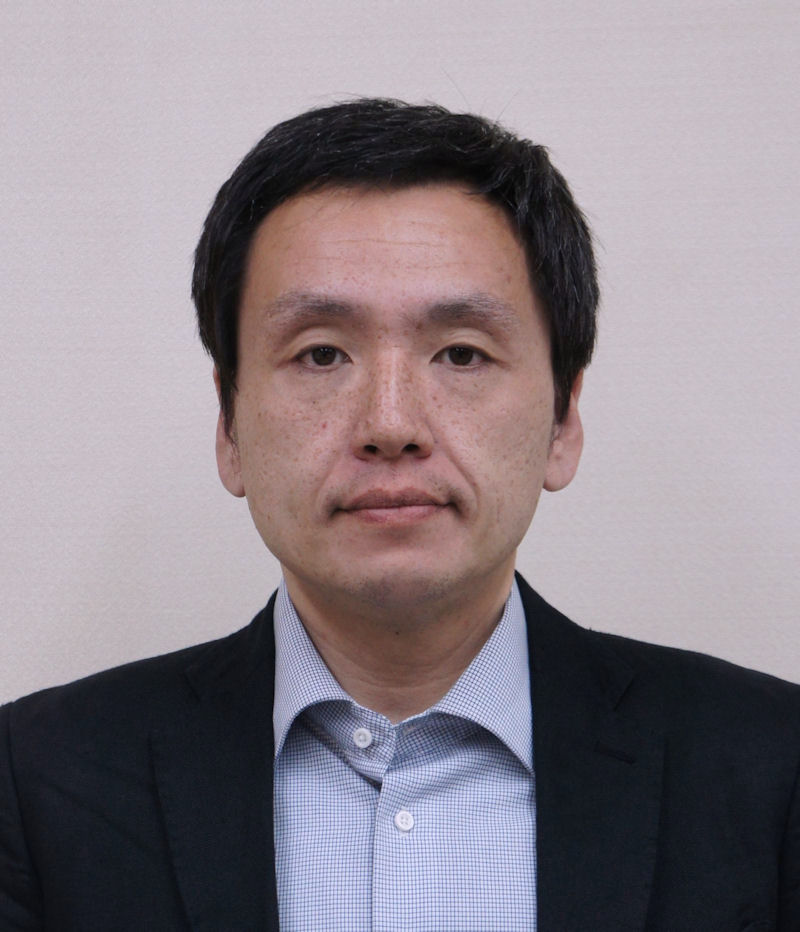
西谷 功/Isao Nishitani
泉涌寺寶物館「心照殿」/Sennyu-ji Museum Shinsho-den
研究員/Researcher/文学博士、大阪大学(2016)
研究者情報/Researcher Information大徳寺伝来「五百羅漢図」から復元される僧院生活
本報告は、宋元時代の清規類や入宋僧たちの著作物を通して、大徳寺伝来「五百羅漢図」などに描かれた羅漢たちの僧院生活の読解を行う。入宋僧の栄西・俊芿・道元・円爾たちは、「五百羅漢図」が制作された東銭湖近隣の諸寺院に参学しており、彼らの著作物に記される規則や僧院生活は「五百羅漢図」の図様を読解するうえで重要な歴史資料である。なかでも、入宋期間12年におよぶ俊芿(1166-1227)が創建した泉涌寺(1226)で近年発見された『南山北義見聞私記』(Nanzanhokugi-kenmon-shiki、14世紀、以下、『私記』Shiki)は、俊芿が景福寺(寧波市)で実践した規則や儀礼、僧院生活が記されていることがあきらかとなっている。本報告は、『私記』の内容から「五百羅漢図」などに描かれた戒律に則った僧院生活の姿を見出したい。
寺院では月例の儀礼として15日と30日に布薩(Upavasatha)という僧侶の清浄性を維持する儀礼を行う。布薩にともない僧侶は入浴する。これは入浴が身体の清浄性を維持する儀礼として位置づけられていたことを意味する。『私記』には、長髪での入浴が禁止されており、入浴前に剃髪を義務づける。こうした僧院生活の規則を踏まえれば、羅漢図「剃髪」(大徳寺本49)は布薩儀礼前の様子をあらわす可能性がある。同「浴室」(大徳寺本48)では僧侶たちは着替えの僧衣を臂に懸けるが、これも『私記』に記される。なお『私記』にある浴室内での所作・作法は、大乗寺本『五山十刹図』「浴室」から復元もできる。
食事も修行である。僧侶達は一斉に僧堂に集まり食事をするが、その所作や作法も『私記』『泉山僧堂浄式Senzan-sodo-jyoshiki』や道元『赴粥飯法Fusyuku-hanpo』に規定されている。羅漢図「展鉢」(大徳寺本52)「飯僧」(大徳寺本51)は、『私記』の内容とよく合致する。食事中には「生飯Saba」をとる。生飯とは自身の粥や飯から米7粒をとりわけ、食後に魚や鳥に与える施食儀礼である。羅漢図「施食」(大徳寺本44)中央の羅漢がそれにあたる。また、京都・個人蔵「羅漢図」(南宋)で侍者たちが喫茶準備をする背後にある生飯台には鳥が群がっているため、個人蔵本が食後の喫茶準備をあらわすことがわかる。
このように、『私記』などから「五百羅漢図」の図像を読解することで、南宋江南地域の諸寺院の寺院生活をはじめ、入宋僧が実践した擬似的南宋仏教の暮らしぶりが復元できるのである。
Monastic Life as Derived from the Daitokuji 500 Luohans
This presentation analyzes monastic life as depicted in the Daitokuji 500 Luohans through the Chan monastic codes of the Song and Yuan periods and the writings of Japanese monks who traveled to China. Monks such as Yōsai, Shunjō, Dōgen, and Enni all visited monasteries in the vicinity of Lake Dongqian, where the 500 Luohans was created. The monastic codes and lifestyles found in their writings constitute important historical materials by which to understand the subject matter of the 500 Luohans. A recently discovered text titled Nanzan hokugi kenmon shiki南山北義見聞私記 (hereafter referred to as Shiki), authored by Shunjō俊芿 (1166-1227) at Sennyūji, the monastery he founded in 1226 after spending twelve years in China, includes the rituals, regulations, and monastic life that Shunjō experienced at the monastery Jingfusi景福寺 in Ningbo. In this presentation, I will be using this text to explore the monastic life based upon precepts as depicted in the 500 Luohans.
Within the monastic calendar, a ritual known as the upavasatha (J. fusatsu 布薩) was held on the 15th and 30th days of every month in order to maintain the purity of the monks. During this ritual, monks would bathe, indicating that bathing was viewed as a ritual that maintained the purity of the body. In Shunjō’s Shiki, bathing with long hair was forbidden, and monks were required to shave their heads before doing so. It is thus possible that the Luohan Having Head Shaven (剃髪 Daitokuji 49) scroll in the 500 Luohans represents a scene before the bathing ritual. In the Bathhouse (浴室 Daitokuji 48) scroll, monks drape their change of clothing over their arms, which also conforms with Shunjō’s text. The rules governing bathhouses described there also conform to the corresponding section in Gozan jissatsu zu 五山十刹図 (Daijōji).
Meals were a part of training. Monks all gathered in the refectory together, and their comportment is regulated in texts such as Nanzan hokugi kenmon shiki, Senzan sōdō jōshiki 泉山僧堂浄式, and Dōgen’s Fushuku hanpō 赴粥飯法. The scenes depicted in both Luohans Preparing to Eat (展鉢 Daitokuji 52) and Luohans Being Seated for a Meal (飯僧 Daitokuji 51) match closely the content of Shunjō’s Shiki. During meals one set aside saba 生飯, which were seven ceremonial grains separated from one’s own food and given after the meal to birds and fish in a ceremonial offering. The central luohan in the scroll Ritual Feeding (施食 Daitokuji 44) is doing precisely this. Furthermore, a Southern Song painting depicted luohans in a private collection (Kyoto) is now known to depict preparations for tea drinking after a meal, because it renders birds gathering on a saba platform as attendants prepare for tea.
In this manner, decoding the iconography of the 500 Luohans from Shunjō’s Shiki allows us to reconstruct the monastic life of Jiangnan-region religious institutions during the Southern Song, as well as the experiences of Japanese monks who traveled there.
Translated by Yukio Lippit
復原自大德寺《五百羅漢圖》的僧院生活
本報告將透過宋元時代的清規類和入宋僧們的著作,對大德寺《五百羅漢圖》等作品中所描繪的羅漢們的僧院生活進行解讀。榮西、俊芿、道元、圓爾等入宋僧,曾在《五百羅漢圖》被製作的東錢湖近鄰的諸寺院參學過,他們的著作所記錄的規則或僧院生活,在解讀《五百羅漢圖》的圖樣上,可說是重要的歷史資料。其中,從近年在俊芿(1166-1227,入宋期間長達十二年)所創建的泉涌寺(1226)中被發現的《南山北義見聞私記》(Nanzanhokugi-kenmon-shiki,14世紀,以下略稱為《私記》,shiki) 中明確可知,俊芿曾持續記錄在景福寺(寧波市)所實踐的規則、儀禮和僧院生活。本報告將從《私記》的內容加以發掘《五百羅漢圖》等所描繪的依據戒律而過的僧院生活的樣貌。
在寺院中,每月的15日和30日會定期舉辦布薩(Upavasatha),這是一種維持僧侶清淨性的儀禮。伴隨著布薩,僧侶需要入浴。這意味著入浴被定位成作為維持身體的清淨性的儀禮。在《私記》中,以長髮入浴是被禁止的,因此僧侶入浴前被賦予剃髮的義務。踏循著這樣的僧院生活的規則,羅漢圖中所見「剃髮(大德寺本49)」的場景,很可能是表現僧侶進行布薩儀禮之前的樣子。同樣在羅漢圖中可見的「浴室」場景中,僧侶們手臂上懸掛著用來替換的僧衣,這也見載於《私記》中。此外,《私記》所載在浴室內的動作和作法,也可以從大乘寺本《五山十剎圖》中「浴室」(大德寺本48)一景加以復原。
用膳也是修行。僧侶們一同聚集在僧堂吃飯,其中的動作和作法也被規定於《私記》、《泉山僧堂淨式(Senzan-sodo-jyoshiki)》和道元的《赴粥飯法(Fusyuku-hanpo)》之中。羅漢圖中「展鉢」(大德寺本52)、「飯僧」(大德寺本51)的場景,與《私記》的內容相當吻合。在吃飯時會進行「生飯(Saba)」的動作。所謂「生飯」是從自己的粥或飯中取出7粒米粒,在飯後給予魚或鳥的施食儀禮。在羅漢圖「施食」(大德寺本44)一景中位於中央的羅漢正進行此一儀禮。另外,在京都個人藏《羅漢圖》(南宋)中,在為羅漢喝茶進行準備的侍者們的背後,有一個鳥類群集的生飯台,由此可知個人藏本表現的是飯後準備喝茶的場景。
如此一來,藉由從《私記》等著作對《五百羅漢圖》的圖像進行的解讀,可以復原以南宋江南地域的諸寺院的寺院生活為首,乃至入宋僧所實踐的擬似南宋佛教生活的情景。
中文翻譯 李宜蓁

Phillip E. Bloom
Huntington Library, Art Collections, and Botanical Gardens
Researcher/Ph.D., History of Art and Architecture, Harvard University(2013)
研究者情報/Researcher Information雲集の儀礼―聖なる降臨と羅漢供―
儀礼に用いられる絵画の機能とは何か。どのようにして絵画は儀礼が行われている時間と空間に参画するのか。本発表では、林庭珪と周季常が描いた五百羅漢図の礼拝の機能について、現在、連幅の第一幅目に数えられている「羅漢会」(大徳寺本1)の精読を通して明らかにしたい。一見すると簡潔な作品だが、本図は一塊りの雲に乗じ、僧へ向かって降臨する五人の羅漢を描いている。僧は、屋外に開かれた建物で柄香炉をとり、在家信者を先導しながら供養儀礼を行っている。画面中央の区画では、従者たちが画中画の前に供物を並べているようすである。この画中画の構図は、別本の羅漢図を想起させるが、大徳寺本の画幅の可能性もある。この通例的な儀礼の次第からすると、「羅漢会」はおそらく、林庭珪と周季常による連幅がそのために仕立てられることになった儀礼そのものを描いていることがわかる。つまり、羅漢たちを主賓とする祭礼の羅漢供である。重要なのは、本図が単に宗教儀礼における身体的な所作のみに焦点をあてたわけではないことである。とりわけ、香炉から立ちのぼる香煙や導師僧の視線、さらにパースペクティブのもとで尊者を運ぶ乗雲が描かれていることに見られるように、むしろいくつかの視覚的で絵のモチーフとなっている細部描写が、ほとんどの中国仏教の儀礼的実践において見えない核心となっている観想という精神的な実践について、私たちに微かながらも鋭敏な洞察を与えているのである。宋代の儀礼書(儀文)に規定されている観想の実践の中で混然一体となっている漂う香煙と雲の流れとを解き示しながら、私は、「羅漢会」は我々鑑賞者に対して、中国の仏教儀礼における内的で感覚的に近づきがたい様相を示していると主張する。究極的には、この作例が示唆するのは、絵画が単なる儀礼供養で使用されるモノとして機能するだけではなく、パフォーマンスとテクストそしてイメージとが一体となった、儀礼にみられる五感的なイマジネール(multisensory imaginaire of liturgy)への抗いがたい入り口を提供しているということである。
日本語訳 前田佳那
‘Gathering like Clouds’: Divine Descents and the Arhat Offering Ritual
What are the functions of a liturgical painting? How do paintings participate in the time and space of ritual performance? In this presentation, I shall seek to address the liturgical function of Lin Tinggui and Zhou Jichang’s Five Hundred Arhats through a close reading of Arhat Offering, the scroll now numbered as the first in the set. A seemingly simple work, the painting depicts five arhats descending on a massive cloudbank toward a monk who, holding an incense censer, leads laypeople in making offerings in an open-air pavilion. In the middle register of the work, servants lay out offerings in front of intra-pictorial paintings whose compositions evoke other arhat paintings, including scrolls in the Five Hundred Arhats. This general liturgical scenario suggests that Arhat Offering depicts the very liturgy for which Lin and Zhou’s set likely was crafted - namely the Arhat Offering, a feast for arhats as the guests of honor. Importantly, the painting does not focus simply on the physical acts of ritual performance. Instead, certain visual and motivic details - most notably, the incense censer, the monk’s gaze, and the perspective from which the deity-conveying cloud is depicted - give us subtle insights into the mental practices of visualization that form the unseen heart of most Chinese Buddhist ritual practices. Unpacking the confluence of incense and clouds in the practices of visualization prescribed in liturgical manuals in the Song, I argue that Arhat Offering reveals the inner, sensorially inaccessible aspects of Chinese Buddhist ritual to the viewer. Ultimately, this work suggests that paintings function not merely as objects of ritualized offering but instead can provide compelling entryways into the multisensory imaginaire of liturgy, an imaginaire that unites performance, text, and image.
「會集如雲」:神聖降臨與羅漢會
禮拜畫(liturgical painting)的功能是什麼?繪畫是如何參與到儀禮行為的時間和空間中的?在本次發表中,我將試圖透過對《羅漢會》(目前被標為全套中的第一幅)的細緻解讀,來闡述林庭珪、周季常大德寺《五百羅漢圖》的禮拜功能。這幅看似簡明的作品,描繪著乘著巨型雲梯降臨的五位羅漢飛向一名僧侶,而此僧手執柄香爐、引領在家信眾於廊亭中進行供養。在畫面中央,僕人在畫中畫前擺放供品,這些畫中畫的構圖令人聯想起包含大德寺《五百羅漢圖》在内的其他羅漢畫。這個常規的禮拜場景暗示著,《羅漢會》描繪的是為被視為主賓的羅漢所舉辦的名為羅漢會的宴會,而林和周的這套作品可能正是為此儀禮所定製。重要的是,這幅畫並未單純地聚焦於儀禮行為的身體上的動作。取而代之的是,某些視覺和基於母題的細節─最顯著的是爐煙、導師僧的目光和載著羅漢的雲被描繪的視角─給予我們對精神實踐之視覺化的隱微而敏銳洞察力,而這些精神實踐形成絕大多數的中國佛教儀禮實踐中不可見的核心。在剖析存於視覺化的精神實踐中(此實踐被規定於宋代的儀禮書中)爐煙和乘雲交匯的狀態時,我認為《羅漢會》是要向觀者揭示中國佛教儀禮中內在的、感官上難以企及的面向。歸根究柢,這件作品暗示了繪畫的功能不僅僅是作為儀禮化供養的物品,還可以提供令人信服的入徑,進入對於禮拜的五種感官的想像(the multisensory imaginaire of liturgy),一種結合了演示、文本及形象的想像。
中文翻譯 沈宏琳
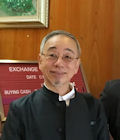
石 守謙/Shou-Chien Shih
中央研究院/Academia Sinica
特聘研究員/Distinguished Research Fellow/Ph.D., Department of Art and Archeology, Princeton University (1984)
研究者情報/Researcher Information大徳寺五百羅漢と現代の中国芸術史研究
20世紀、中国芸術史が次第にひとつの現代の学問分野として成立してから、仏教絵画は永らく扱いにくい状況にあった。第二次世界大戦以前からすでに、中国早期の芸術史の主流として広く受け入れられていた仏教彫刻の分野に対して、仏教絵画、とりわけ12世紀以降のものは、未だ十分に重要視されず、ただ僅かに仏教研究に関係する図像と見なされていたにすぎない。
羅漢図は、12世紀以後の仏教絵画のなかで重要性の高い一群である。そのうち、100幅に及ぶ周季常・林庭珪筆「大徳寺五百羅漢図」(1178-1188)は、深く掘り下げた近年の調査成果が広く開示され、芸術史学界において一層重要視されている。1894年、フェノロサが初めて欧米諸国に羅漢図を紹介して既に100年以上もの年月が過ぎた。本作は、悠久の認識の歴史のなかにあって、中国芸術史がひとつの学問分野として成立し、一度ならず転換した過程を経験したと言えよう。フェノロサの展覧会と大徳寺本のうち12幅がその後米国のコレクションとなったことは、その第一段階における重要な出来事とみなすことができる。すなわち、後期の仏教絵画は、このとき現代の芸術史の枠組みのなかで曖昧な位置におかれ、その認識にあたって伝統的な芸術史観との衝突がおこった。このような状況はおそらく、劉松年「羅漢図」(1207年、台北故宮)が巨匠の名の下に帰属したことで経てきた状況と比べ、明らかな差異がある。
20世紀中葉、方聞教授の五百羅漢の研究はまさしく第二段階を代表するもので、様式分析によって仏教絵画史に現代的な変革をもたらした。方聞教授は、二人の画家の作品における筆描形式と空間表現を検討し、この「構造分析」の観点をはじめて中国の人物画史に試みたといえ、この学術史的な意義は十分な注意を払うに値する。近年の学者たちはすでに、大徳寺五百羅漢図の宗教儀礼の文脈に関して極めて豊富な理解を得ているが、このような羅漢図が12 、13世紀の東アジア絵画史における「絵画」として、どのように新しい位置付けがなされ得るかについて、方聞教授のアプローチは啓発するところがある。
日本語訳 前田佳那
Daitokuji 500 Luohans Painting and the Modern Study of Chinese Art History
Following the gradual establishment of Chinese art history as a modern academic discipline in the twentieth century, Buddhist painting has found itself in an awkward situation. In contrast to Buddhist sculpture, which had already been widely accepted before the Second World War as a principal element in the study of early Chinese art history, Buddhist paintings, particularly of the twelfth century and after, have yet to receive proper attention, at best serving simply as illustrations accompanying studies of Buddhism.
Luohan paintings constitute an important body of works within the corpus of Buddhist paintings of the twelfth century and after. In particular, the one hundred scrolls of the Daitokuji Five Hundred Luohans (1178–1188) crafted by Zhou Jichang and Lin Tinggui have already attracted great attention from the field of art history thanks to the publishing of extensive recent surveys. It has been more than one hundred years since Fenollosa first introduced this set of luohan paintings to the West in 1894. It might said that over the course of this long history of their being recognized by art historians, the Daitokuji Five Hundred Luohans experienced the two-phase process of the establishment and transformation of the academic discipline of Chinese art history. Fenollosa’s exhibition and the subsequent acquisition of twelve of the Daitokuji scrolls by American collectors can be seen as major events in that first phase. This speaks to the ambiguous position of later Buddhist painting within the framework of modern art history in this period, as well as to the conflict between the recognition of them and traditional views of art history. Such a situation clearly differs from the experience of a work like Liu Songnian’s Luohans (dated 1207, Taipei National Palace Museum), which belong to the hand of named master.
Professor Wen Fong’s study of the Five Hundred Luohans in the middle of the twentieth century represents the second phase―the modern transformation of Buddhist painting history brought about through stylistic analysis. His discussion of the two painters’ brushwork and their representation of space can be seen as his first attempt to apply “structural [or compositional] analysis” to the history of Chinese figure painting; its meaning for the history of scholarship is well worthy of attention. Although scholars have gained a fuller understanding of the ritual logic of the Daitokuji Five Hundred Luohans in recent years, his path can still inspire the repositioning of these arhat paintings as “paintings” within the history of East Asian painting of the twelfth and thirteenth centuries.
translated by Phillip E. Bloom
大德寺五百羅漢與現代中國藝術史研究
自二十世紀中國藝術史逐漸建立為一個現代學術科目後,佛教繪畫一直處於一個尷尬的局面。相對於二次戰前已被普遍接受為早期藝術史主流部分的佛教雕刻領域,佛教繪畫,尤其是十二世紀以後者,卻尚未受到充分的重視,至多僅作為佛教研究的配合圖像而已。
羅漢畫在十二世紀以後佛教繪畫中具有重要份量,其中由周季常、林庭珪製作的百幅大德寺《五百羅漢圖》(1178-1188)借助於近年深入調查成果之公布,更已引起藝術史學界之高度重視。這距離Fenollosa在1894年初次向西方介紹這組羅漢畫已有一百多年之久。在這個漫長的認識史中,大德寺五百羅漢圖可謂經歷了中國藝術史這個學科自成立而又一再轉向的過程。Fenollosa的展覽與其後大德寺本中十二幅作品流入美國收藏可視為第一階段的要事,意謂著後期佛教繪畫在此時現代藝術史架構中曖昧不清的位置,以及認識上與傳統藝術史觀的衝突。如此情況如與劉松年《羅漢圖》(1207年,台北故宮)因歸屬於大師名下而經歷的狀況相比,差異立判。
而在二十世紀中期方聞教授對五百羅漢圖之研究則代表第二階段由風格分析所帶來的佛教繪畫史的現代變革。他對兩位畫家在作品中筆描線條與空間表現的探討,可說是他「結構分析」角度首度在中國人物畫史中的嚐試,其學術史意義很值得注意。即使在近年學者們已就大德寺羅漢圖之宗教儀式脈絡取得更豐碩理解之際,他的取徑還可對這些羅漢圖如何以「繪畫」的身分在整個十二、三世紀東亞繪畫史中重新定位,有所啟發。
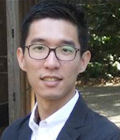
Ching-Ling Wang
Rijksmuseum Amsterdam
Curator of Chinese/Ph.D., Freie Universitä Berlin(2013)
研究者情報/Researcher Information羅漢図の二つの伝統: 周季常・林庭珪筆「五百羅漢図」と金大受筆「十六羅漢図」及びその東アジア美術史における位置
羅漢とは、声聞乗の行者が修證する最高の境地を意味する。羅漢という観念は、インドに起源するが、インドにあっては羅漢像と羅漢信仰はともに形成されなかった。むしろ中国に伝来した後に、東アジア文化圏にあまねく影響を及ぼした。中国の羅漢図の伝統は、『法住記』が漢訳されて間もない8世紀頃にはじまる。経論には羅漢の図像の特徴について記載がなく、画中の羅漢の図像に定まった規則は無かった。図像学的な約束事に縛られず、画家は自由な想像力を発揮し羅漢を表現した。そのため、羅漢図は東アジアにおいて最も創造性に溢れる画題であったと言えるだろう。本発表では主に、南宋の寧波地域における仏教絵画から二つの羅漢図の伝統、すなわち周季常・林庭珪筆「五百羅漢図」と金大受筆「十六羅漢図」、その東アジア美術史上の位置について論じる。
これら二つの羅漢図連幅は、いずれも13世紀頃に日本へ東伝した。日本の羅漢図表現に極めて大きな影響を生みだし、繰り返し模写され再生産される過程で羅漢図の典範となった。注目すべきは、周季常・林庭珪筆「五百羅漢図」のうち、19世紀末に渡米しそのままアメリカに留まった画幅があったことである。対して、金大受筆「十六羅漢図」連幅のうち数点が20世紀初めにヨーロッパへ渡った。本発表では、初めに、周季常・林庭珪筆「五百羅漢図」と金大受筆「十六羅漢図」の日本仏画における受容の過程と、これら二つの羅漢図連幅が日本に影響を与え規範となった過程を論じる。次に、ともに東アジアの羅漢図の規範となりながら、それぞれアメリカとヨーロッパへと流転し異なる運命を辿った両者を比較する。本発表ではさらに、19世紀末から20世紀初め、欧州で東アジア美術史学が構築される過程で、これら二つの作品が持った衝撃について議論する。
日本語訳 前田佳那
Two Arhat Painting Traditions: On Zhou Jichan & Lin Tinggui’s Five Hundreds Arharts and Jin Dashou’s Sixteen Arharts and their Position in East Asian Art History
The arhat (worthy one) is the highest status or ideal saint in Hīnayāna Buddhism (in contrast with the bodhisattva as the saint in Mahāyāna Buddhism). Although the concept of the arhat has its origins in India, there are no portraits of arhats nor was the arhat a developed aspect of Indian Buddhism. On the other hand, within the East Asian cultural circle, the arhat is popular and spread widely after Buddhism was introduced into China. The tradition of arhat painting was established around the eighth century, soon after the script Nandimitrāvadāna (Fazhuji) was translated into Chinese. Since the script contains no documentation regarding to the iconographic characteristics of arhats there was no fixed initial iconography. Without iconographical constraint, the artists were able to create images of arhats based on their imaginations; hence arhat painting is a most creative category within East Asian Buddhist painting. This article is focus on two traditions of Southern Song Buddhist painting in the Ningbo area exemplified by The Five Hundreds Arhats by Lin Tinggui & Zhou Jichang and the Sixteen Arhats by Jin Dashou.
The Five Hundreds Arhats by Lin Tinggui & Zhou Jichang and the Sixteen Arhats by Jin Dashou are both a series of painting that were brought to Japan around the thirteenth century. They both had tremendous impact on arhat painting in Japan. Through the process of constantly being copied, they became the canon of arhat painting. Some of the paintings of Five Hundreds Arhats were displayed in an exhibition in the United States in the late nineteenth century and were retained there after it closed. In contrast, some of the paintings of Sixteen Arhats entered a collection in Europe in the early twentieth century. This article firstly deals with the receiving process and the impact both series’ had on Japanese painting. Secondly, these two canons of East Asian arhat painting had different destinies when they entered Western collections, which will be compared. The other issue this article deals with is the impact these two series had on the formation of the East Asian art historiography in the late nineteenth and early twentieth century in Europe.
羅漢畫的兩個傳統:周季常、林庭珪《五百羅漢》與金大受《十六羅漢》及其在東亞美術史的位置
羅漢,意指聲聞乘修證的最高境界。此觀念雖然源自印度,但在印度並未有羅漢像和羅漢信仰的形成,反而在其傳入中國後普遍流行而影響遍及東亞文化圈。中國羅漢畫的傳統約創始於《法住記》譯出不久後的八世紀,由於經論並未記載羅漢圖像的特徵,因此畫中的羅漢圖像並無定規。在沒有圖像學的約束下,畫家在表現羅漢時得以自由發揮想像,堪稱東亞佛教畫中最具有創造力的一個類別。本文主要討論南宋寧波地區佛教繪畫中的兩個羅漢畫的傳統:即周季常、林庭珪《五百羅漢》以及金大受《十六羅漢》及其在東亞美術史上的位置。
周季常、林庭珪《五百羅漢》和金大受《十六羅漢》兩個羅漢畫系列皆於十三世紀左右東傳日本,並在日本的羅漢畫表現上產生極大的影響,在不斷地被摹寫和再創造的過程中成為羅漢畫的典範。值得注意的是周季常、林庭珪《五百羅漢》系列中的部份畫作於十九世紀晚期赴美展覧後而留在美國;而金大受《十六羅漢》系列中的若干畫作亦於二十世紀初流至歐洲。本文首先處理周季常、林庭珪《五百羅漢》和金大受《十六羅漢》兩個羅漢畫系列在日本佛畫上所產生的接受與影響及其成為典範的形成過程。其次,同樣作為東亞羅漢畫典範的周季常、林庭珪《五百羅漢》和金大受《十六羅漢》在分別流轉至美國與歐洲後有著不同的命運。做為對照,本文處理的另一個議題是兩者各自對於十九世紀末至二十世紀初歐洲的東亞美術史學建構的過程中所起的作用。

Yukio Lippit
Harvard University
Professor/ Ph.D., Art and Archaeology, Princeton University(2003)
研究者情報/Researcher Informationアーネスト・フェノロサと五百羅漢図
本発表では、1894年、ボストン美術館でアーネスト・フェノロサが行った大徳寺五百羅漢図の展覧会を取り巻くさまざまな状況について明らかにする。「古代中国仏教絵画特展―日本京都大徳寺所蔵」と題された展覧会では、100幅一具のうち44幅が特集され、コープリー・スクエア・ビルディングにおいて、この年の12月に陳列された。その後すぐにこれらの作品はニューヨークとフィラデルフィアで展示されることになり、そのうち10幅はボストン美術館のコレクションに入り、さらにもう2幅がチャールズ・ラング・フリアーのコレクションとなった。大徳寺五百羅漢図は、よく知られているように美術の目利きであったバーナード・ベレンソンに強い感銘を与え、初期ルネサンスのイタリアの巨匠たちに関する彼の著作において、引き合いに出される重要な作例となった。
その後、陸続となされた大徳寺五百羅漢図についての批評的な受容は、学問的な関心を集めていった。その一方で、フェノロサ自身の本作との関係性は今後、以下の5つのコンテクストの射程のなかで位置づけられるであろう。日本における度重なる旅行と経験にはじまり、ハーバード大学ホートンライブラリーのフェノロサ関係文書から蒐集される自筆資料、19世紀後半における美術史上の諸言説の展開、明治時代に行われた日本の寺院による什宝類の売却、さらに伝統的な狩野派の鑑識である。
日本語訳 前田佳那
Ernest Fenollosa and the 500 Luohans
This presentation explores the circumstances surrounding Ernest Fenollosa’s exhibition of the Daitokuji 500 Luohans at the Museum of Fine Arts, Boston, in 1894. Titled “A Special Exhibition of Ancient Chinese Buddhist Paintings, Lent by the Temple Daitokuji, of Kioto, Japan,” the exhibition featured forty-four scrolls from the 100-scroll set for display in the MFA’s Copley Square building in December of that year. Soon after the works would be displayed in New York and Philadelphia; ten of the paintings would enter the MFA collection and two more the collection of Charles Lang Freer. The Daitokuji 500 Luohans famously made a strong impression upon the art connoisseur Bernard Berenson, and would serve as an important point of reference in his writings on early Renaissance Italian masters.
While the subsequent critical reception of the 500 Luohans has received scholarly attention, Fenollosa’s own relationship to the scrolls will be situated within the context of his travels and experiences in Japan, writings as gleaned from the Fenollosa Archives in Harvard’s Houghton Library, evolving art historical discourse of the late nineteenth century, the sale of monastic treasures by Japanese temples during the Meiji era, and traditional Kano connoisseurship.
費諾羅沙(Fenollosa)和大德寺《五百羅漢圖》
此次發表將探索一些圍繞在1894年於波士頓美術館、費諾羅沙(Ernest Fenollosa)舉辦的大德寺五百羅漢圖的展覽的史情。在那年十二月,於波士頓美術館的卡布里廣場館,題為「中國佛教繪畫特展-日本京都大德寺藏」的展覽以這套百幅作品中的44幅為主要展品。隨即,這套作品將於紐約和費城展出,而其中十幅將會進入波士頓美術館的收藏,額外的兩幅將納入佛利爾(Charles Lang Freer)的私藏。眾所周知,大德寺《五百羅漢圖》給藝術鑑定大家貝倫森(Bernard Berenson)留下了深刻的印象,並且將在他關於早期文藝復興的義大利大師們的著作中充當了一個重要的據點。
儘管隨後關於大德寺《五百羅漢圖》的重大反響已經受到了學術上的關注,我會將費諾羅沙自身對這些圖軸的關聯置於以下的脈絡:他在日本的旅行和經歷、從哈佛大學霍頓圖書館藏的費諾羅沙檔案中蒐集起來的文稿、十九世紀末期展開的藝術史論述、明治時期由日本寺院進行的寺院寶物的出售以及世代沿襲的狩野派鑑定法。
中文翻譯 沈宏琳
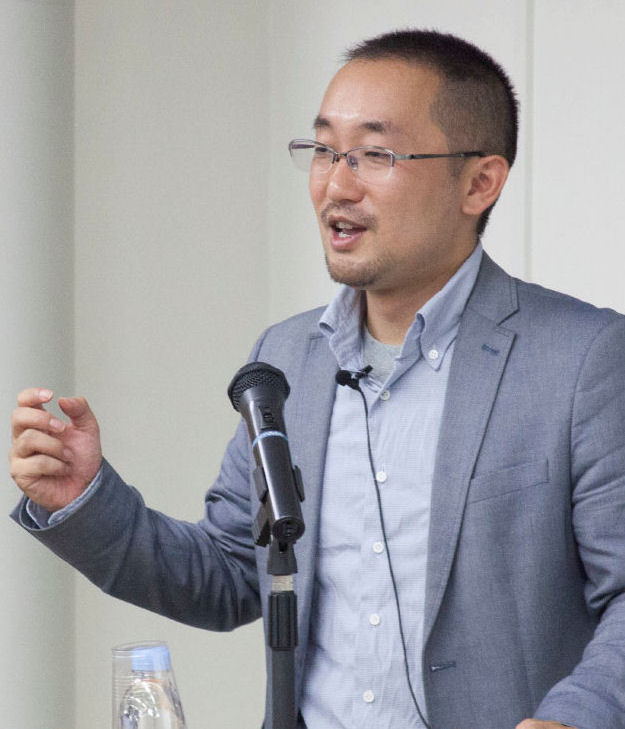
塚本 麿充/Maromitsu Tsukamoto
東京大学/The University of Tokyo
准教授/Associate Professor/文学博士、東北大学(2011)
研究者情報/Researcher Information近代・「中国」絵画研究精神史のなかの大徳寺「五百羅漢図」
発表者は、近代における中国絵画研究史を、複雑な研究対象である「中国」への研究者の様々な社会的な反応、すなわち「精神史」としてとらえることが可能であると考えている。特に日本の場合、19世紀から20世紀にかけての「中国」認識は大きく変化し、そのなかで中国藝術への態度やコレクションは大きく変容していったことが知られる。
江戸時代までに固定化した権威としての「東山御物」の社会的な機能が減少し、「唐物」から「中国美術」へと、「中国のモノ」への眼差しが変化していくと、それらのものは新たな社会的な文脈のなかに再配置されていくことになった。禅宗の墨蹟と水墨系仏画が「中国美術」の代表として高い評価を維持していくのに対して、着色系仏画に対してそれらをどのような新しい「中国美術」の文脈の上で再定置すべきなのかという新しい命題に、研究者は取り組んでいくこととなったのである。中国大陸に実際に足を運び、感動を新たにした日本の中国学者たちは、欧米の新たな研究手法を取り入れながら自らの新しい中国像を模索していったと言える。「中国」という文化空間に対してどのように向き合うかという研究者の中国観の変化は、作品の理解や展示とどのような関係を結んだのであろうか。
中国本土での士大夫文化や、南宋という特殊な文化空間の新たな理解は、大徳寺「五百羅漢図」への新たな視覚を切り開くこととなるが、本発表では、漢学から支那学、聖賢の学から中国という「他者」研究への、近代における日本の中国研究の歩みを振り返り、そのなかに「五百羅漢図」を位置付けることで、絵画を研究することの精神史としての側面を明らかにしたい。
The Daitokuji 500 Luohans within the Intellectual History of the Art History of “Chinese” Painting in the Modern Era
I believe that it is possible to understand the historiography of Chinese painting in the modern era as an “intellectual history” (seishinshi), that is to say, one that reflects the diverse social responses of scholars to “China” as a complex subject of inquiry. In the case of Japan in particular, it is well known that the view of “China” changed dramatically from the nineteenth to twentieth century, and that as a consequence the collecting and attitude towards Chinese art was transformed.
The social authority of the Ashikaga collection (Higashiyama gomotsu), which had been fixed by the Edo period, had waned. When focus shifted from karamono, or Chinese art objects that had been prized in premodern Japan, to “Chinese art,” these objects became resituated within a new social context. Whereas Zen calligraphy (bokuseki) and monochrome Buddhist ink paintings maintained their high status within “Chinese art,” scholars had to consider how to situate polychrome Buddhist paintings in this new framework. While traveling to the continent and being moved by their visits to famous sites, Japanese scholars of Chinese studies incorporated new western scholarly methods in an attempt to create a new image of China. How does this transformation of “China” as a cultural space among scholars relate to the understanding of works or display practices?
New understandings of Chinese literati culture and the particularities of the cultural space of the Southern Song have led to new perspectives on the Daitokuji 500 Luohans . This presentation will examine the development of Chinese studies in modern Japan and trace the shift from traditional Chinese studies (kangaku) to early sinology (shinagaku), from the study of sages (seiken) to the study of China as an “other.” By situating the 500 Luohans therein, I hope to clarify the intellectual history dimension of the study of painting.
translated by Yukio Lippit
在近代「中國」繪畫研究精神史中的大德寺《五百羅漢圖》
發表者認為將近代的中國繪畫研究史,作為研究者對「中國」此一複雜的研究對象所產生的種種社會性反應,亦即「精神史」來予以理解一事是可能的。特別是就日本而言,為人所知的是,從19世紀到20世紀,對「中國」的認識產生了很大的變化,其中對中國藝術的態度和收藏也形成了巨大的變貌。
隨著至江戶時代為止作為固定化的權威的「東山御物」的社會性機能減弱,對「中國物品」的視角從「唐物」轉變成「中國美術」,這些物品也被重新配置於新的社會性脈絡之中。相較於禪宗墨跡和水墨系的佛畫作為「中國美術」的代表仍舊享有極高的評價,對於著色系佛畫,這些作品該如何在新的「中國美術」的脈絡中進行再定位,成為研究者著手探究的新課題。實際上踏足於中國大陸,並重新獲得感動的日本的中國學學者們,可以說一邊採取歐美新的研究手法,一邊摸索著各自的新中國形象。對於研究者的中國觀的變化,亦即所謂如何面對「中國」此一文化空間的思考方式,是以何種關係來與作品的理解和展示產生連結的呢?
儘管在中國本土的士大夫文化,以及南宋此一特殊文化空間的新的理解,為大德寺《五百羅漢圖》開啟了新的視野,就本次發表而言,則是透過回顧從漢學到支那學,從聖賢之學到作為「他者」的中國研究這樣的近代日本中國研究的足跡,以及藉由在其中對《五百羅漢圖》的定位,闡明作為繪畫研究的精神史的面向。
中文翻譯 李宜蓁
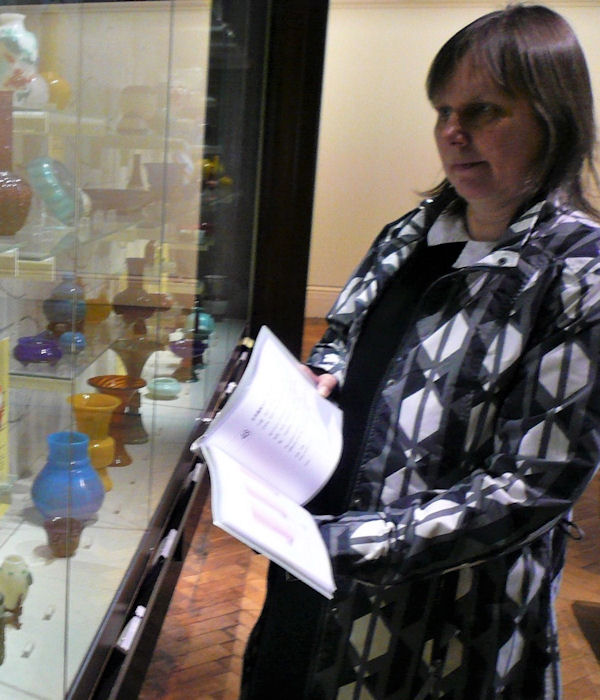
Minna Törmä
University of Glasgow
Lecturer/Ph.D., Art History, Institute for Art Research, University of Helsinki(2002)
研究者情報/Researcher InformationEnchanted by Luohans 展開編: 中国の宗教画に出会った西洋の学者たち
Enchanted by Luohans『羅漢に魅せられて』は、スウェーデン系フィンランド人の美術史家オズワルド・スィレンに関する発表者の専著(香港大学出版、2013年)のタイトルであるが、その内容を展開させれば、19世紀末から20世紀初頭における西洋の学者たちの中国の宗教画との出会いをより広く包括することができる。バーナード・ベレンソン(1865-1959)や、彼が1894年にボストン美術館で行われた大徳寺五百羅漢図の展覧会を訪れた際の話はよく知られている。それほどに知られてはいないが、大徳寺五百羅漢図が、オズワルド・スィレンに大きな衝撃を与えていたこともまた事実であった。ボストン美術館の展示室に並べられた作品の前で胸を躍らせて立っていたとスィレンは自ら述懐しているが、それはさながらベレンソンと同じようすでありながら、二十年程後のことであった。大徳寺五百羅漢図は、イタリア美術を棄てて中国美術の世界へ身を投じるというスィレンの決断を、背後から動かした一つの要因であったと考えられる。
一人のイタリア美術を専門としてきた西洋の学者にとって、中国の宗教画や彫刻は、宗教主題が支配的なルネサンス以前を考察するうえで、興味深い好対照となった。スィレンは、宗教上の純粋性において本質的なものは何かを探求するなかで中国美術へと転向したと述べている。彼によれば、それは1200年代、1300年代のイタリア絵画でさえも捉えることができなかった何かであったという。本発表では、スィレンの学識を出発点としながら、さらに議論の視界を広げ、他の西洋の学者たちが、とりわけ羅漢図について、またさらに広く中国の宗教画に対してどのような見解を抱いていたのか、第二次世界大戦以前の学界に重点をおいて明らかにする。ベレンソンに加え、本発表ではラファエル・ペトルッチ(1872-1917)、ローレンス・ビニヨン(1869-1943)、ルートヴィヒ・バフホフ(1894-1976)の著作を検証する。アーネスト・フェノロサのEpochs of Chinese and Japanese Art『東洋美術史綱』もこのグループに含まれるであろうが、それはこうした学者たちの着想源としての範囲に留まるものでしかなかったと考えられる。
予想される通り、ヨーロッパ美術史から研究を始めた学者たちが含まれていたこともあって、彼らの研究はヨーロッパもとりわけイタリア絵画と中国絵画との比較へと進んでいった。主要な問いは、精神的な価値はどのようにすれば最もよく絵画に表現され得るのかという点にあった。今日では、美術作品の異文化間の比較には問題が多いと考えるが、当時は、作品を並置することで接近していく取り組みは、馴染みの薄い題材を理解する一般的な方法であった。この問題に取り組む様々な努力において、彼らが行った分析は絵画の主要な表現方法としてのモデリングと線描との間で対立を引き起こすこととなった。モデリングは、西洋の宗教美術における絵画表現を特徴づけるものであって、前提抜きに科学的かつ事実に基づいたアプローチであり、それ故に、深い宗教的感情の媒体としてふさわしくないと主張された。モデリングと陰影法は定形の像を創りだしたが、一方、表現媒体として第一に線を使う描写は、物理的であれ精神的であれ動きの感覚を伝えた。大徳寺五百羅漢図は、精神的な極にあるものに対して線を使用した比類のない事例とみなされたのである。
日本語訳 前田佳那
Enchanted by Luohans Expanded: Western Scholars Encountering Chinese Religious Paintings
‘Enchanted by Luohans’ is the title of my monograph focusing on the Finnish-Swedish art historian Osvald Siren (Hong Kong University Press, 2013); however, it is a title that can be expanded to cover more widely the encounter of Chinese religious painting by Western scholars in the late 19th to early 20th centuries. The story of Bernard Berenson (1865-1959) and his visit to the exhibition of the Daitokuji Lohan paintings in the Museum of Fine Arts in 1894 is well known. Less well known has been the impact these paintings had on Osvald Siren (1879-1966), who describes himself standing exhilarated in front of the paintings in the galleries of the Museum of Fine Arts in similar fashion but some 20 years later. The paintings can be considered one of the main forces behind his decision to abandon Italian art and to immerse himself in the world of Chinese art.
For a Western scholar focusing on Italian art, with pre-Renaissance themes dominated by religious subject matter, Chinese religious painting and sculpture offered an intriguing contrast. Siren maintained that he turned to Chinese art in his search for the essentials in religious purity― something that not even the Italian duecento and trecento paintings, in his view, had quite captured. Taking Siren’s scholarship as a starting point, the presentation expands the scope of the discussion and explores the views of other Western academics on Lohan paintings in particular and on Chinese religious painting more broadly, with an emphasis on pre - World War II scholarship. In addition to Berenson, the paper examines the writings of Raphael Petrucci (1872-197), Laurence Binyon (1869-1943) and Ludwig Bachhofer (1894-1976). Though Ernest Fenollosa’s Epochs of Chinese and Japanese Art would belong this group as well, it will be considered only to the extent that it features as an inspiration to those scholars.
As might be expected, the studies lead to comparisons between European and particularly Italian and Chinese painting, some of the scholars having started their careers in European art history. The main question was how could spiritual values best be expressed in painting? Currently, cross-cultural comparisons of art works are considered problematic, but an approach through juxtaposition was a common way to come to terms with unfamiliar material. In the efforts to address this issue, analyses became a battlefield between modelling and line as the main means of expression. It was argued that modelling, which was seen as characteristic of European pictorial representations of religious art, was predominantly a scientific and factual approach and thus could not serve as a carrier of deep religious emotion. Modelling and chiaroscuro created static imagery whereas a representation utilising line as the prime vehicle of expression conveyed a sense of movement, both physical and spiritual. The Daitokuji Lohan paintings were seen as the ultimate example of the employment of line to spiritual ends.
《為羅漢著迷》擴充篇:西方學者與中國宗教畫的相遇
《為羅漢著迷》Enchanted by Luohans是我一本關於瑞典裔芬蘭籍藝術史家喜龍仁(Osvald Sirén, 1879-1966)的專書(香港大學出版社,2013)的書名。然而,這是一個可以更廣泛地用來涵蓋十九世紀末到二十世紀初西方學者與中國宗教畫相遇的標題。貝倫森(Bernard Berenson, 1865-1959)和他於1894年在波士頓美術館參訪大德寺羅漢圖的展覽的事蹟,已廣為人知。較鮮為人知的是,這些畫作對喜龍仁產生的衝擊。喜龍仁敘述,在波士頓美術館的展廳中,自己懷抱著雀躍的心情立於這些畫作之前。這個情況和貝倫森相似,不過時間上較貝倫森晚了二十年之久。這些畫作可以被視為他決定放棄義大利藝術,轉而投身於中國藝術世界的背後推力之一。
對一個以義大利藝術為專業的西方學者而言,相較於宗教題材佔優勢的文藝復興之前的主題,中國的宗教畫和雕塑提供了一個有趣的對照。喜龍仁堅稱,他轉向中國藝術是為了追尋宗教純粹性中的本質,在他的看來,這是一個甚至在十三、十四世紀義大利繪畫(duecento and trecento paintings )也不曾被捕捉到東西。以喜龍仁的學術為起點,這個發表將擴充討論的範圍,除了特別探討西方學界對羅漢畫的觀點之外,也將擴及西方學界對中國宗教畫的見解,並將重心置於二次世界大戰以前的學術狀況。不只是貝倫森,本發表也將分析佩初茲(Raphael Petrucci, 1872-1917)、賓揚(Laurence Binyon, 1869-1943)、巴哈佛(Ludwig Bachhofer, 1894-1976 )的著作。雖然費諾羅沙(Ernest Fenollosa, 1853-1908)的《東洋美術史綱》Epochs of Chinese and Japanese Art也可以歸入此一範疇中,但它將僅僅被視為這些學者的靈感來源而已。
正如可能被預期的,這些研究促成歐洲(特別是義大利)和中國繪畫的比較,其中有些中國繪畫的學者的事業始於歐洲藝術史。主要探討的是如何才能最佳地將精神上的價值表現於繪畫之中。當今,藝術品的跨文化比較被視為問題重重,但將藝術品並置的手段在當時是一個逐漸了解不熟悉的材料的普遍方法。為了努力地闡述此一議題,諸議論演變成作為主要表現工具的塑形法(modelling)和線描法(line)的戰場。塑形法被視為歐洲宗教藝術中圖繪再現的特點,無庸置疑地它是科學的和基於事實的方法,因此不能作為深刻的宗教情感的載體。相較於塑形法和明暗法(chiaroscuro)創造出靜態的形象,利用線描法所進行的再現,則作為表現情感的主要載體,傳達著不論是物質上或精神上的動態感。大德寺羅漢圖則被視為運用線描法來表現精神世界的極端存在(spiritual ends)的最佳例子。
中文翻譯 李宜蓁